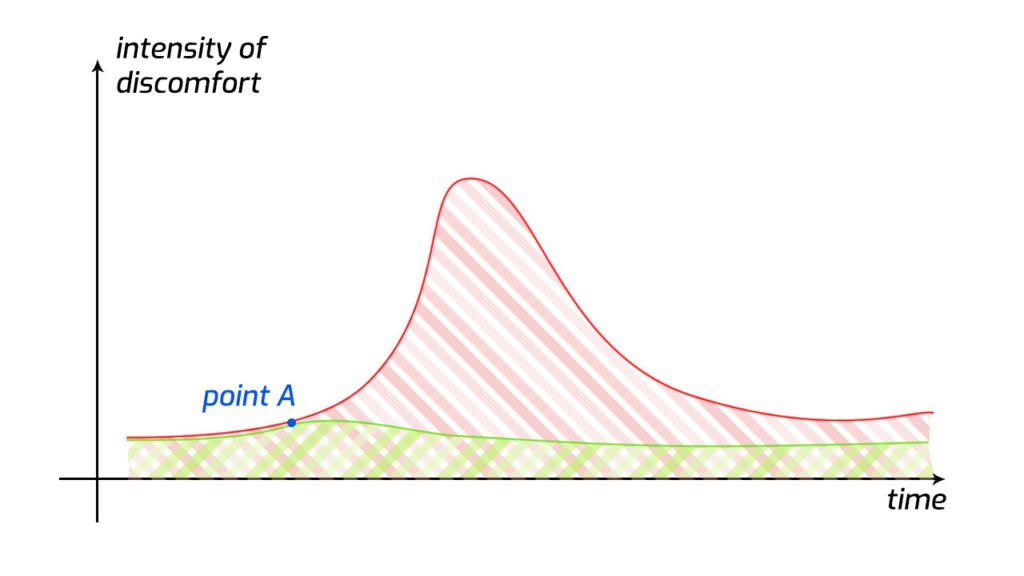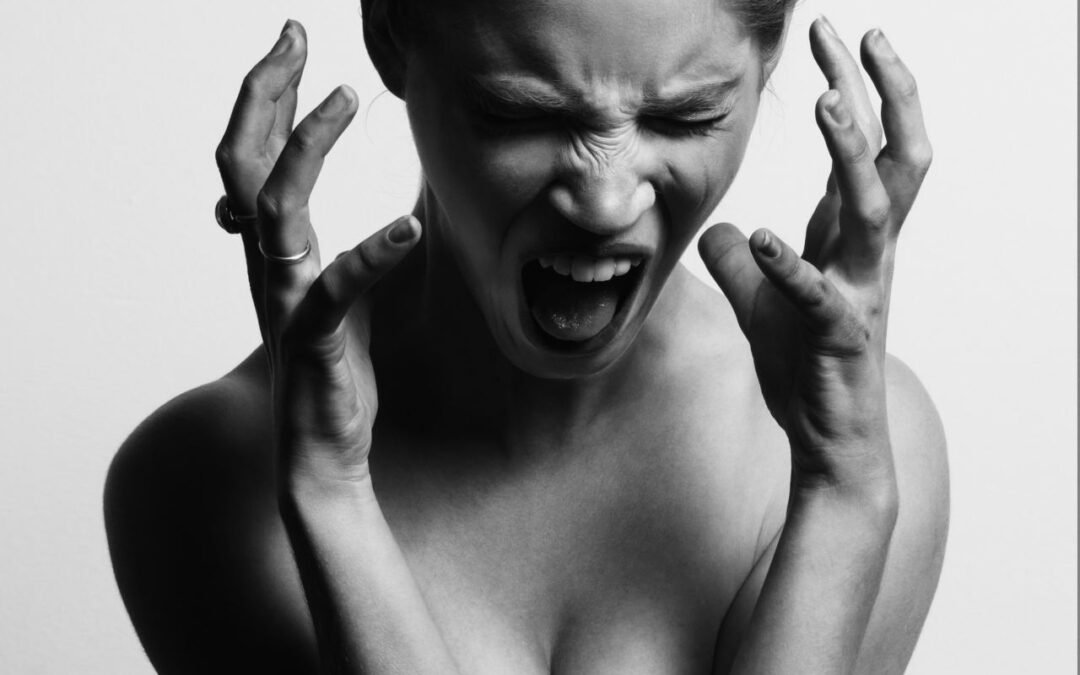The mechanism of a panic attack in its basics is always the same and its mere understanding, that is, understanding of what is actually going on behind the scenes has a key role in breaking free from panic attacks.
During a panic attack, you have a feeling that you don’t know what’s going on, that things are getting out of control, that is why the panic emerges. And probably nobody ever told you in the right way, how to deal with this moment, when you notice the whole thing is starting.
Because of a deep subconscious cultural belief, a distorted perspective on the world and on life, what we believed is that at this moment, in some way, we need to (confront) the panic attack. We learned to see everything we see as “negative” and what we feel as unpleasant as an enemy we need to fight, this way or the other. From this point of view, the only thing that makes sense is to take a fighting attitude and try to defeat the enemy. However, you will never defeat a panic attack, not just a panic attack, but any unpleasant “psychological” condition. And the moment you start fighting, you lost the battle.
The only thing you can do is let it through. In the same way in which, in some martial arts you use the energy of your opponent with which he attacked you to let him through. Out of his own impulse, in a moment, he will find himself on the floor. You can also remember a toreador that waves a red flag and the bull that runs into the wall of the arena with full speed. That bull can be your panic attack.
Everybody always taught you to do something in such a moment. And while you keep trying to solve the thing in this way, there will be a thousand and one theory in your mind about what you should do. Should I take this or that attitude, use this technique or that one, to think or not to think… and in such a moment you find yourself with this kind of noise in your head, a big part of which is an attempt of the mind to find a solution and to resist the panic attack it feels coming, that is, a strong feeling of inner resistance to what you feel and experience. Exactly this trying and resistance are the factors that pour oil onto the fire and take you to the peak of the panic attack.
And it is this point – point A on the graph – where you recognize that a panic attack is coming, but the climax has not yet come, that is what we will focus our attention on in this article. At that point, your thoughts begin to accelerate and multiply, and it is a turning point from which you can move to one side or the other – the red or the green line. The area below the graphs – dashed – can be understood as the amount of thought you have in mind in a particular case, red – the first case, green – the second case. We will now explain what is the first and what is the second case.

In the first case – the red line, there is a classic panic attack. In the second case – the green line – you have the understanding and you position yourself completely differently – there is no panic attack.
How? A panic attack usually makes you feel it coming before it reaches a climax, i.e. there is a curve of your feeling of discomfort that rises slowly at first and then steeper. At point A, when you notice that a panic attack is coming, you usually “panic” further and enter a state of mind of intense resistance to the upcoming panic attack. In doing so, new and new thoughts swarm out from the existing ones and in a second you are completely torn apart with panic, fear, discomfort, and an attempt to escape the whole thing.
Before point A, what you experience is a certain usual amount of thoughts in your mind, a “habitual” amount of discomfort… Increasing the level of discomfort is usually caused by one or a few unpleasant thoughts which by themselves, until we add additional thoughts, are not scary at all, and which can but don’t have to come along with some external situation in connection with which these unpleasant thoughts usually occur. Either way, up to point A, the condition is at least “bearable”. Thoughts, however uncomfortable they may be, are something you can deal with. The problem is the thoughts that “stick” to these thoughts, thoughts about thoughts, thoughts about the current experience, the current state. If we let the current state be as it is, there is no problem.
In the first case – the red line you start to struggle with the oncoming feeling and the struggle buries you deeper and deeper, more and more thoughts are generated. You don’t allow yourself to feel uncomfortable but frantically try to escape, the harder you try to escape, the stronger the discomfort. And along the red curve, the discomfort intensifies until you reach the peak of the panic attack, the attack itself lasts as long as it lasts, and finally, the downward curve continues – you slowly return to your normal state.
The second case is the attitude to the panic attack, i.e. to one’s own inner discomfort, which comes from understanding the Inside-Out nature of human experience. Simply put, when you really know that discomfort, panic attack, or any kind of uncomfortable feeling is nothing but your own thoughts and that what you really are can never be compromised by them, your attitude towards your own experience inevitably changes and so does your experience of panic attacks.
The deeper voice in you suddenly knows and sees that there is no point in fighting and running away from your own discomfort because that only makes things worse, but that the only thing that makes sense and that naturally begins to come to you as an intuitive impulse is to let it through. And also, you suddenly get the opportunity to allow your discomfort to be, to allow yourself to feel it, to allow it to pass through you, whatever the mind is saying at that moment. As we allow the emotion, so we allow the thoughts that come at the same time, we simply allow them to overwhelm us, without judgment and without trying to control them.
And contrary to what you would expect and what the mind says will happen, that we will sink even deeper, if in point A instead of resistance and an attempt to escape there is acceptance, allowing discomfort to completely overwhelm you, your discomfort that survives solely on your resistance, suddenly has nothing to survive on. This means that your internal state continues to change according to the green curve, i.e. from point A, discomfort stays at that level for some time and then begins to dissolve or immediately begins to dissolve and you return to your basic state very quickly.
Point A is not a point after which there is no going back, if it passes, at any stage of a panic attack, if you let yourself go to the inner state and allow yourself to feel what you are feeling, no matter how uncomfortable, very soon, the state moves on its own and dissolves. The mechanism through which the return to balance generally occurs by itself and which works as soon as the personal mind gives up trying to control is also called a self-correcting mechanism.
Start exploring your own self-correcting mechanism and things might change very quickly.



